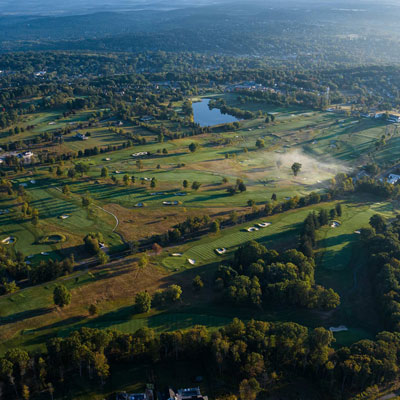Walter Travis
An Australian-born champion golfer who designed Cape Arundel, Westchester, and Hollywood. His innovative, undulating greens and strategic bunkering pushed American golf architecture forward.

January 10, 1862, Maldon, Australia
July 31, 1927
What to Know About Walter Travis (ft. Brian Schneider)
The Incredible Set of Walter Travis Greens at Cape Arundel
Born in Australia in 1862, Walter Travis attended schools in Melbourne as an adolescent before making his way to America in 1886. After settling down in New York City, he lived a fairly ordinary life, working for an investment firm on Wall Street. In 1896, Travis picked up his first set of golf clubs at the age of 34. He quickly made up for lost time and ended up playing a pivotal role in the early stages of American golf.
Just two years after making his first swing, Travis had solidified himself as one of the premier amateurs in the game by qualifying for the 1898 and 1899 U.S. Amateurs. Following back-to-back semi-final losses, Travis captured the title in 1900, paving the way for a decorated amateur career. Over the next decade, he picked up two more U.S. Amateurs (1901, 1903), a second-place finish at the 1902 U.S. Open, four Metropolitan Golf Association Championships, and a victory at the 1904 British Amateur, where he became the first player from America to take home the vaunted trophy.
In the midst of this run, Travis also began to build a career in golf architecture. An extended stay in the United Kingdom in the early 1900s influenced his ideas. His first design was a collaboration with John Duncan Dunn at Ekwanok Country Club (1899) in Vermont. Much of Travis’s early recognition, however, was due to his successful remodel at the Devereux Emmet course at Garden City (1906), the eventual host of the 1908 U.S. Amateur.
Travis worked mostly in the Northeast, designing Hollywood Golf Club (1917), East Potomac Park (1917), and Cape Arundel (1920). In 1919, he laid out both 18-hole championship courses at Westchester Country Club in New York. In addition to his original designs, Travis did extensive remodeling work. His redesigns of the Country Club of Buffalo (1912) and Columbia Country Club (1921) prepared each of those courses to host the U.S. Open. Toward the latter part of his career, Travis completed Lookout Point Country Club (1921), Spring Brook Country Club (1921), Round Hill Club (1922), and the Country Club of Troy (1925), among other courses.
Altogether, Travis designed, renovated, or consulted for over 50 courses across North America. He remained active until his death in 1927 and was inducted into the World Golf Hall of Fame in 1979.
Country Club of Scranton (Old Course)
Thanks to the genius of Walter Travis, Country Club of Scranton is a golf course worthy of immense study in the green building department
Country Club of Scranton (Old Course)
Cape Arundel Golf Club
This modest Maine club possesses one of the most audacious and memorable sets of greens in American golf
Cape Arundel Golf Club
Country Club of Troy
Located on a hilly property in the Upper Hudson Valley, the Country Club of Troy has an unassuming atmosphere and a world-class set of Walter Travis greens
Country Club of Troy


Leave a comment or start a discussion
Engage in our content with thousands of other Fried Egg Golf Members
Engage in our content with thousands of other Fried Egg Golf Members
Get full access to exclusive benefits from Fried Egg Golf
- Member-only content
- Community discussions forums
- Member-only experiences and early access to events




.webp)













Leave a comment or start a discussion
Lorem ipsum dolor sit amet, consectetur adipiscing elit. Suspendisse varius enim in eros elementum tristique. Duis cursus, mi quis viverra ornare, eros dolor interdum nulla, ut commodo diam libero vitae erat. Aenean faucibus nibh et justo cursus id rutrum lorem imperdiet. Nunc ut sem vitae risus tristique posuere. uis cursus, mi quis viverra ornare, eros dolor interdum nulla, ut commodo diam libero vitae erat. Aenean faucibus nibh et justo cursus id rutrum lorem imperdiet. Nunc ut sem vitae risus tristique posuere.